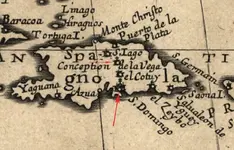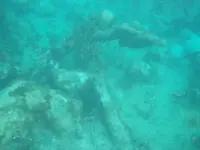ScubaFinder
Bronze Member
- #261
Thread Owner
Nice work Lobo, I'll bring my camera with me to Santo Domingo and we can try out that super-zoom lens. 
Sasnz - 18 cannon so far, and 7 large anchors. We are only working in about 12-15 feet of water, but we are right next to large reef and often the waves are crashing very hard right on top of the wreck site. Once the seas get over 4 feet we have to stay on the beach. I have several new permanent scars from being thrown into the reef by the surge, and one day myself and 2 other divers came extremely close to loosing our lives.

Sasnz - 18 cannon so far, and 7 large anchors. We are only working in about 12-15 feet of water, but we are right next to large reef and often the waves are crashing very hard right on top of the wreck site. Once the seas get over 4 feet we have to stay on the beach. I have several new permanent scars from being thrown into the reef by the surge, and one day myself and 2 other divers came extremely close to loosing our lives.












